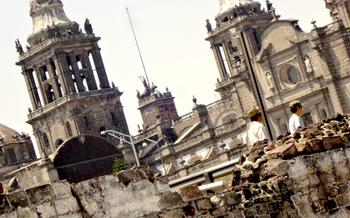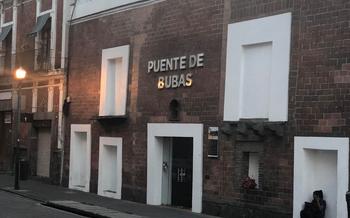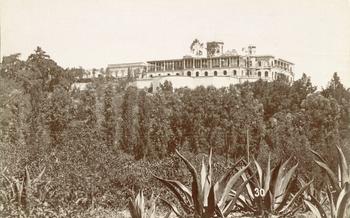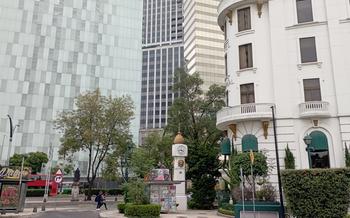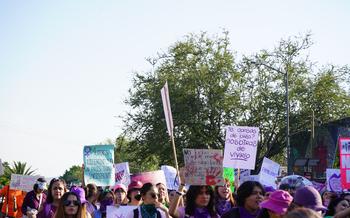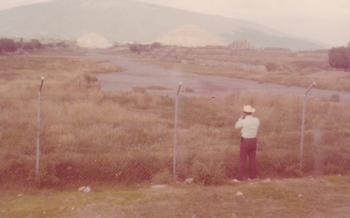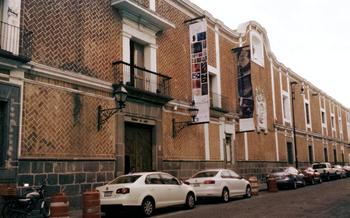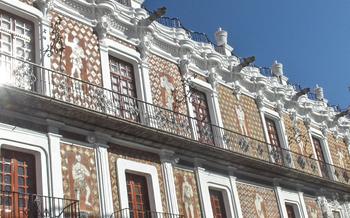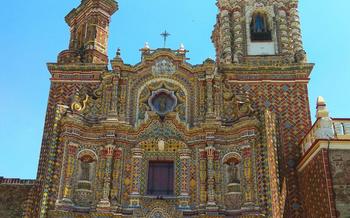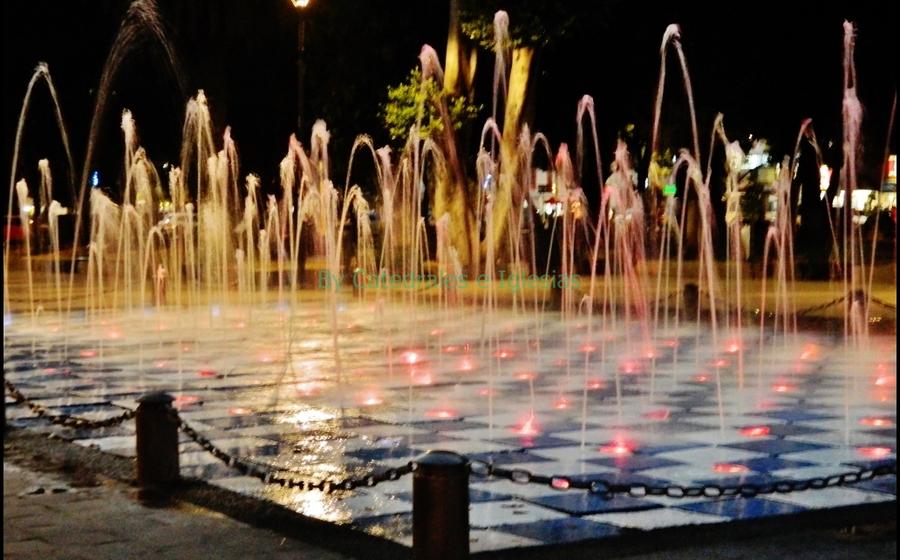
Museo de la Medicina
- Museo de la Medicina
- History of the Museum
- Collection Highlights
- Guided Tours
- Location and Hours of Operation
- Exploring the Exhibits
- The Human Body Gallery
- The History of Medicine Gallery
- The Art and Medicine Gallery
- The Interactive Gallery
- Special Exhibitions
- Educational Programs
- Research Center
- Cultural Events
- Insider Tip
Museo de la Medicina
The Museo de la Medicina is a unique and fascinating museum dedicated to the history of medicine in Mexico and showcases a remarkable collection of medical instruments, anatomical models, paintings, and sculptures. It is located in the historic center of Puebla and is housed in a former hospital, providing a truly immersive experience for visitors interested in the evolution of medical practices and the human body.
History of the Museum
The Museo de la Medicina was founded in 1964 by a group of physicians and historians with the goal of preserving and showcasing the rich history of medicine in Mexico. The museum is housed in a former hospital, the Hospital de San Pedro, which was built in the 16th century and is considered to be one of the oldest hospitals in the Americas. The hospital was in operation for over 400 years, and during that time it served as a teaching hospital for the medical school at the Benemérita Universidad Autónoma de Puebla. Today, the Museo de la Medicina occupies the former hospital's main building, which has been carefully restored and renovated to provide a modern and welcoming space for visitors.
Collection Highlights
The Museo de la Medicina boasts a diverse collection of artifacts that span the history of medicine in Mexico. Visitors can marvel at a wide range of medical instruments, from ancient surgical tools to modern diagnostic equipment. Anatomical models, both antique and contemporary, provide a fascinating glimpse into the inner workings of the human body. Paintings and sculptures related to medicine offer an artistic perspective on the field, while interactive exhibits engage visitors of all ages and make learning about medicine fun and interactive.
Guided Tours
The Museo de la Medicina offers guided tours in Spanish and English, providing visitors with an in-depth understanding of the exhibits and their historical context. Led by knowledgeable docents, these tours take visitors on a journey through the history of medicine, from ancient practices to modern breakthroughs. The docents share fascinating stories and anecdotes about the medical instruments, anatomical models, and paintings on display, bringing the exhibits to life and revealing the human side of medicine. Whether you're a medical professional, a history buff, or simply curious about the evolution of healthcare, these guided tours are an excellent way to explore the museum's rich collection and gain a deeper appreciation for the field of medicine.
Location and Hours of Operation
The Museo de la Medicina is conveniently located in the historic center of Puebla, a UNESCO World Heritage Site. It is situated on the corner of Calle 2 Norte and Avenida 11 Oriente, just a few blocks from the city's main square, the Zócalo.
The museum is open to the public Tuesday through Sunday from 9:00 AM to 5:00 PM. Admission is free of charge, making it an excellent value for visitors on a budget. Whether you are a medical professional, a history buff, or simply curious about the human body, the Museo de la Medicina is a must-visit destination in Puebla.
Exploring the Exhibits
The Museo de la Medicina offers a wide range of exhibits that explore different aspects of medicine and its history. Visitors can wander through thematic galleries, engage in hands-on activities, and immerse themselves in interactive experiences that bring the world of medicine to life. The museum's collection is vast and varied, encompassing everything from ancient medical instruments to cutting-edge medical technology. Whether you're interested in learning about the human body, the history of medicine, or the latest advancements in medical science, you're sure to find something to fascinate and engage you at the Museo de la Medicina.
The Human Body Gallery
The Human Body Gallery offers a fascinating exploration of the human body and its functions. Visitors can learn about anatomy and physiology through interactive exhibits and life-size models. They can explore the muscular system, the skeletal system, the digestive system, and much more. The gallery also features a section on medical imaging, where visitors can see how X-rays, CT scans, and MRIs are used to diagnose and treat disease. Whether you are a student, a medical professional, or simply someone who is interested in learning more about the human body, the Human Body Gallery is a must-see.
The History of Medicine Gallery
The History of Medicine Gallery takes visitors on a journey through the evolution of medical practices from ancient times to the present day. It features exhibits on ancient Egyptian medicine, Greek and Roman medicine, medieval Islamic medicine, and the development of modern medicine in Europe and the Americas. Visitors can learn about the contributions of famous physicians such as Hippocrates, Galen, and Avicenna, as well as the development of surgical techniques, the discovery of antibiotics, and the rise of public health. The gallery also includes a section on the history of medicine in Mexico, with exhibits on traditional Mayan and Aztec healing practices, the introduction of European medicine during the colonial period, and the development of modern healthcare in Mexico.
The Art and Medicine Gallery
The Art and Medicine Gallery is a captivating space where art and science converge. It showcases a remarkable collection of paintings, sculptures, and engravings that depict medical scenes, portraying the human body, medical practices, and the relationship between art and healing. This gallery offers a unique perspective on the history of medicine, exploring the ways in which art has been used to document, interpret, and communicate medical knowledge.
Visitors can admire exquisite paintings that capture the drama and emotion of medical procedures, such as surgeries and childbirths. Sculptures depict anatomical details with remarkable accuracy, providing a glimpse into the inner workings of the human body. Engravings and illustrations offer a fascinating look at historical medical practices and the evolution of medical instruments.
One of the highlights of this gallery is a series of paintings by José Clemente Orozco, a renowned Mexican muralist. His works explore the themes of suffering, disease, and death, offering a powerful commentary on the human condition. Another notable piece is a sculpture by Rodin, which depicts a doctor examining a patient, capturing the intensity and compassion of the medical profession.
The Art and Medicine Gallery is a testament to the deep connection between art and healing. It invites visitors to contemplate the human body as both a subject of artistic expression and a source of medical knowledge.
The Interactive Gallery
The Interactive Gallery at the Museo de la Medicina is a delightful and educational space that allows visitors to engage with the world of medicine in a hands-on, immersive way. Step into a virtual reality simulation of a surgical procedure, test your medical knowledge with interactive quizzes, and play games that challenge your understanding of the human body. Solve medical puzzles, try your hand at suturing, and explore the inner workings of the human body through interactive exhibits that bring anatomy and physiology to life. This gallery is a must-visit for anyone interested in experiencing medicine in a fun and interactive way.
Special Exhibitions
In addition to its permanent collection, the Museo de la Medicina also hosts a variety of special exhibitions on various medical topics. These exhibitions are often organized in collaboration with other museums and institutions, and they offer visitors a chance to learn about the latest developments in medical research and technology. Past exhibitions have explored topics such as the history of surgery, the science of pandemics, and the role of art in medicine. The museum also hosts educational programs and workshops in conjunction with these exhibitions, providing visitors with an opportunity to engage with the material in a more interactive way.
Educational Programs
The Museo de la Medicina offers a wide range of educational programs for students of all ages. These programs are designed to promote an understanding of the history of medicine, the human body, and the role of medicine in society.
The museum's educational programs include workshops, lectures, and outreach programs. Workshops are offered on a variety of topics, such as anatomy, physiology, and medical history. Lectures are given by experts in the field of medicine and cover a wide range of topics, from the history of surgery to the latest advances in medical research. Outreach programs are offered to schools and community groups and can be tailored to meet the specific needs of each group.
The Museo de la Medicina's educational programs are an excellent way for students to learn about the history of medicine, the human body, and the role of medicine in society. These programs are also a great way for students to develop their critical thinking skills and their ability to communicate effectively about complex topics.
Research Center
The Museo de la Medicina is not just a museum; it. The center conducts research on the history of medicine, focusing on Mexican medical traditions and practices. Researchers at the center study various aspects of medical history, including ancient healing practices, colonial medicine, and the development of modern healthcare in Mexico. The research center publishes its findings in scholarly articles and books, contributing to the broader understanding of the history of medicine in Mexico and Latin America.
Cultural Events
The Museo de la Medicina offers a variety of cultural events throughout the year, including concerts, film screenings, theater performances, and literary readings. These events are a great way to learn more about the history of medicine and its impact on society. They also provide an opportunity to meet other people who are interested in medicine and health.
The museum's concert series features performances by local and international musicians, playing everything from classical to jazz to traditional Mexican music. The film series showcases documentaries and feature films about medicine and healthcare, both past and present. The theater performances range from historical dramas to comedies to experimental works. And the literary readings feature authors reading from their works on medicine and health.
All of the museum's cultural events are free and open to the public. They are a great way to learn more about medicine, meet new people, and enjoy the vibrant culture of Puebla.
Insider Tip
To make the most of your visit to the Museo de la Medicina, plan your trip for a weekday to avoid the weekend crowds. Take advantage of the free guided tours offered in Spanish and English to gain in-depth insights into the exhibits from knowledgeable docents. Don't miss the interactive exhibits in the Human Body Gallery, where you can explore anatomy and physiology through hands-on activities and life-size models. With its captivating displays, educational programs, and cultural events, the Museo de la Medicina is a must-visit destination for anyone interested in the fascinating history of medicine in Mexico.
